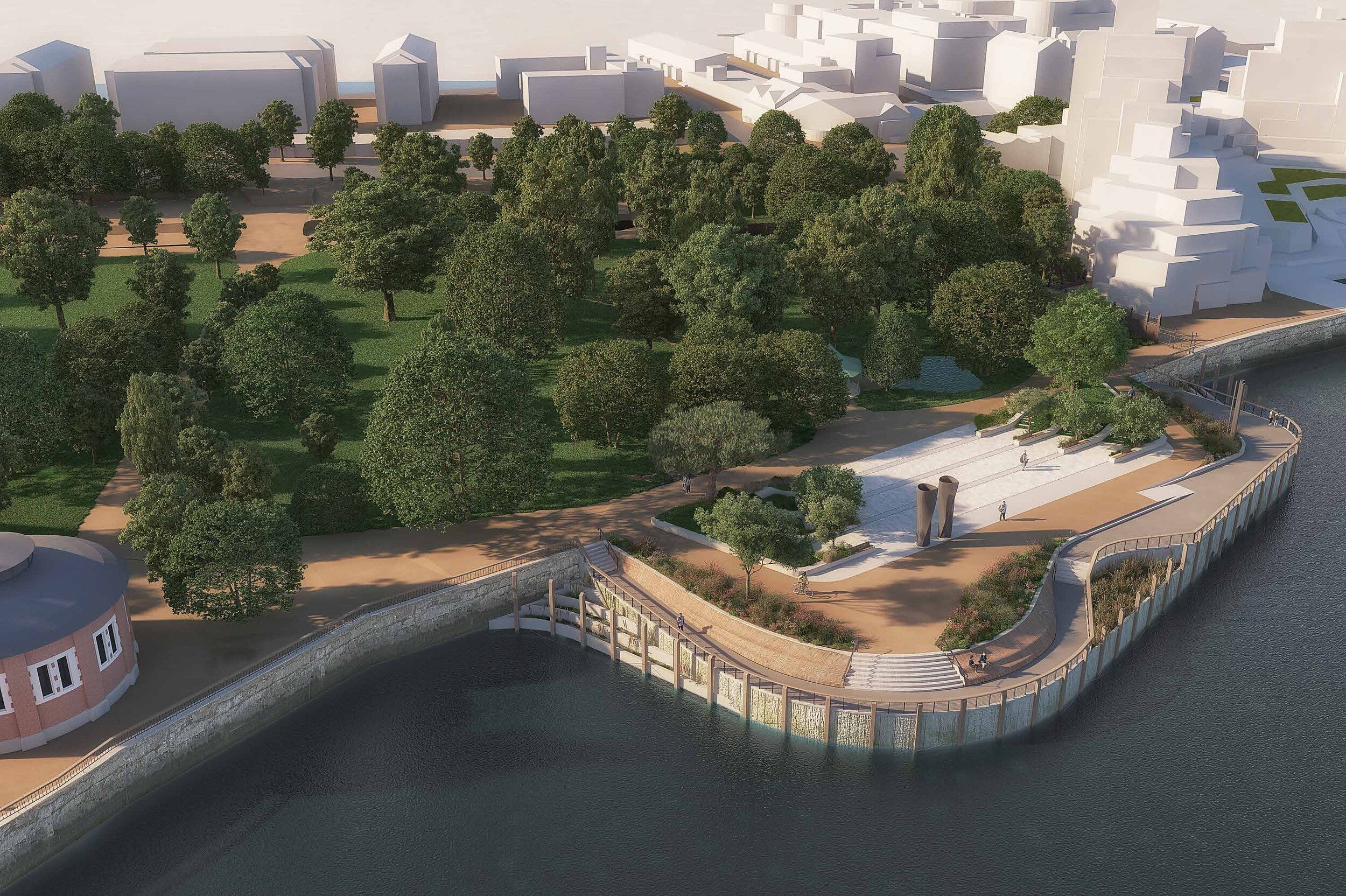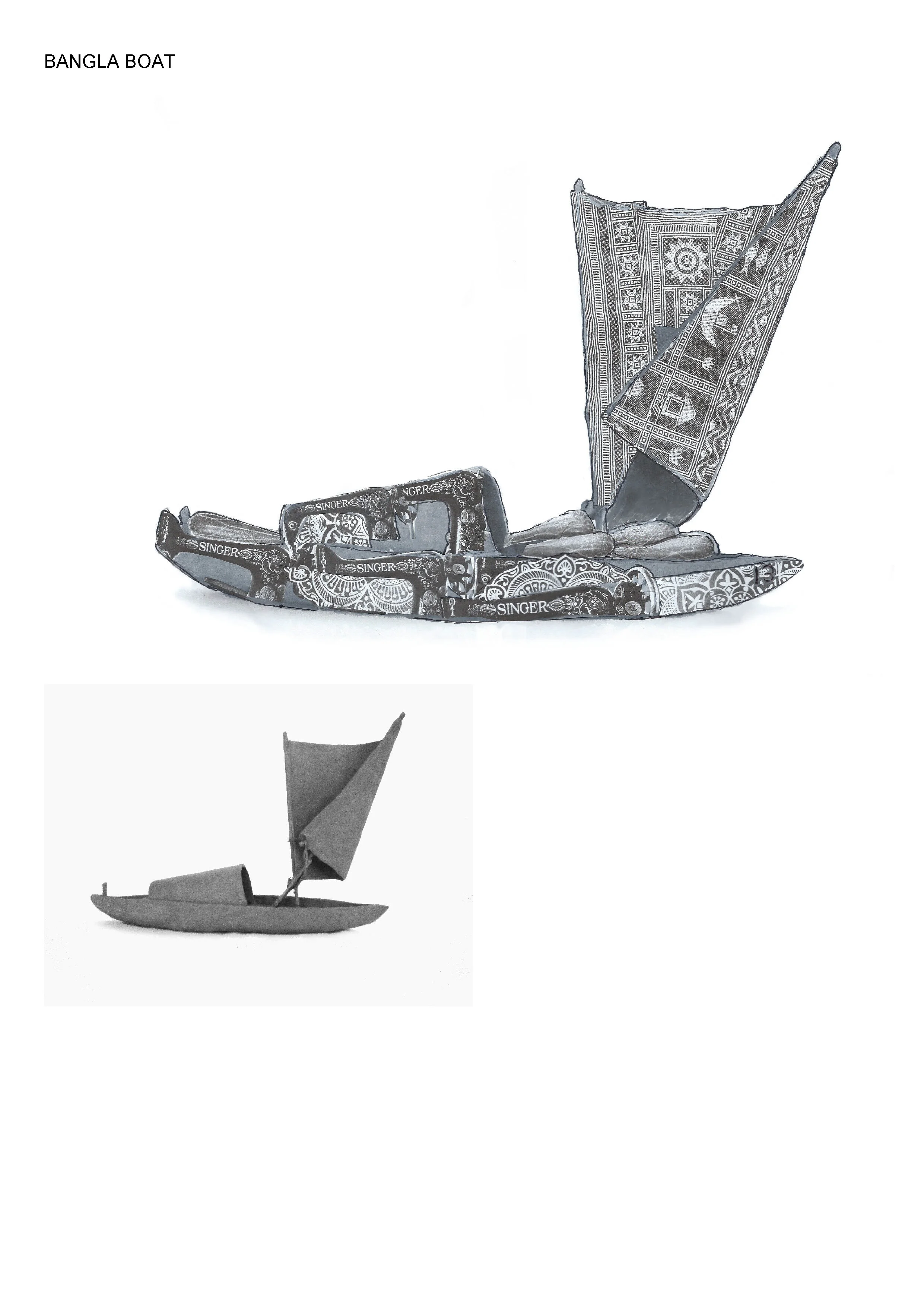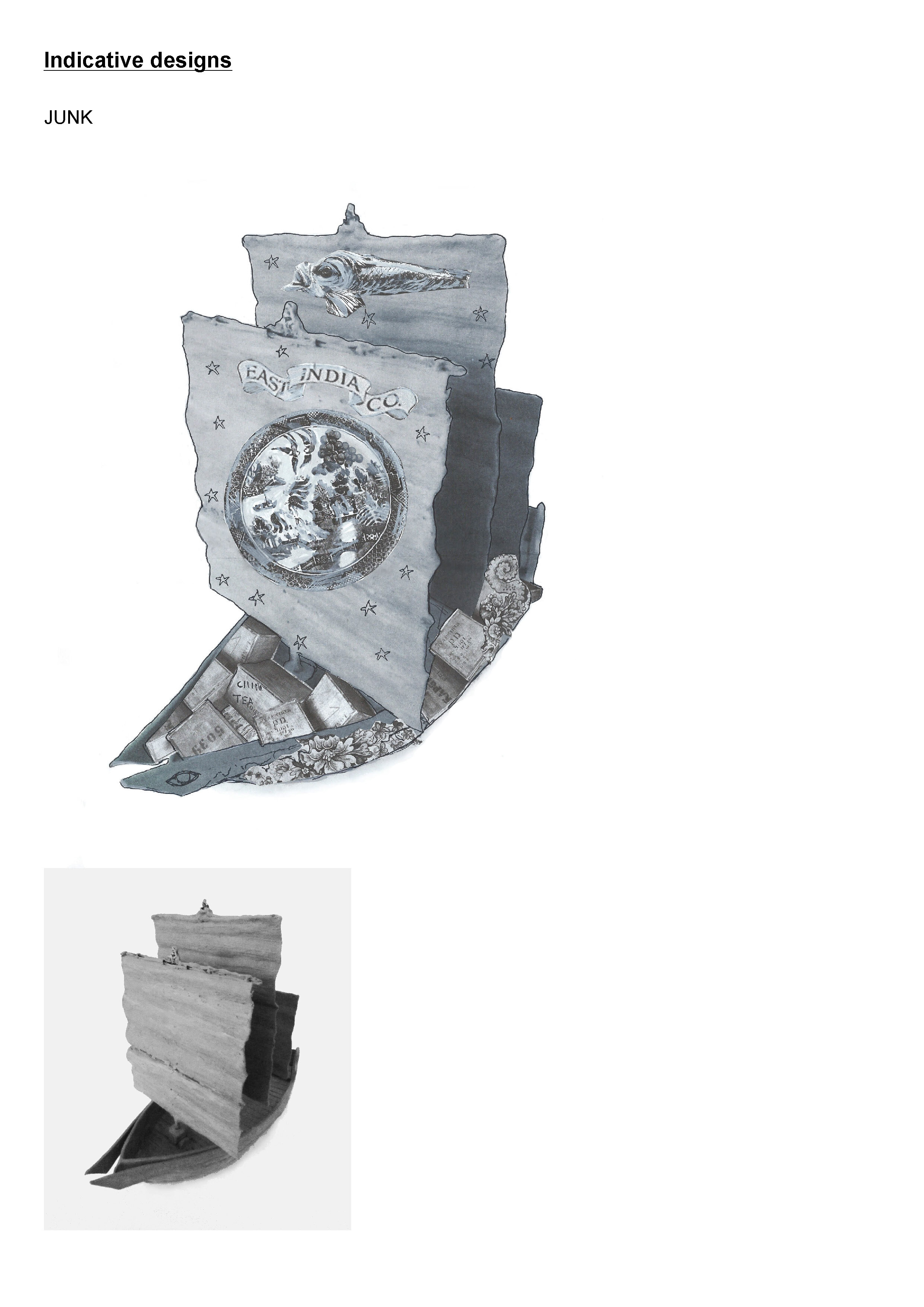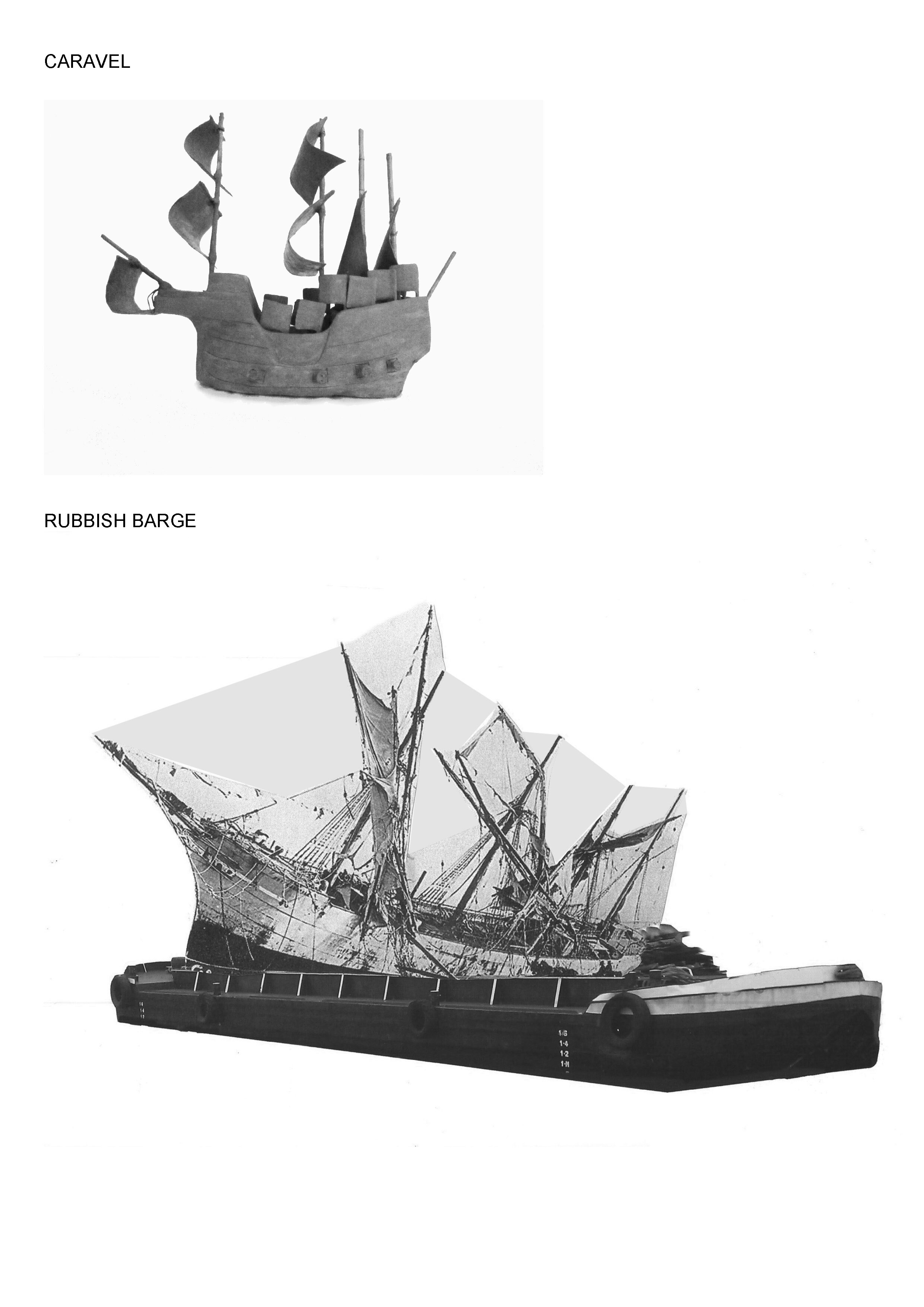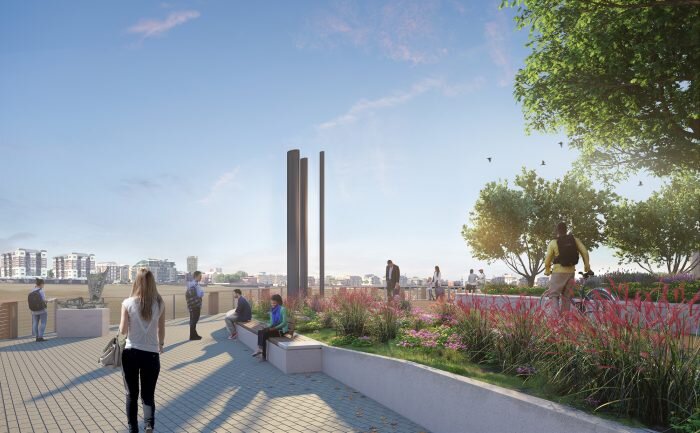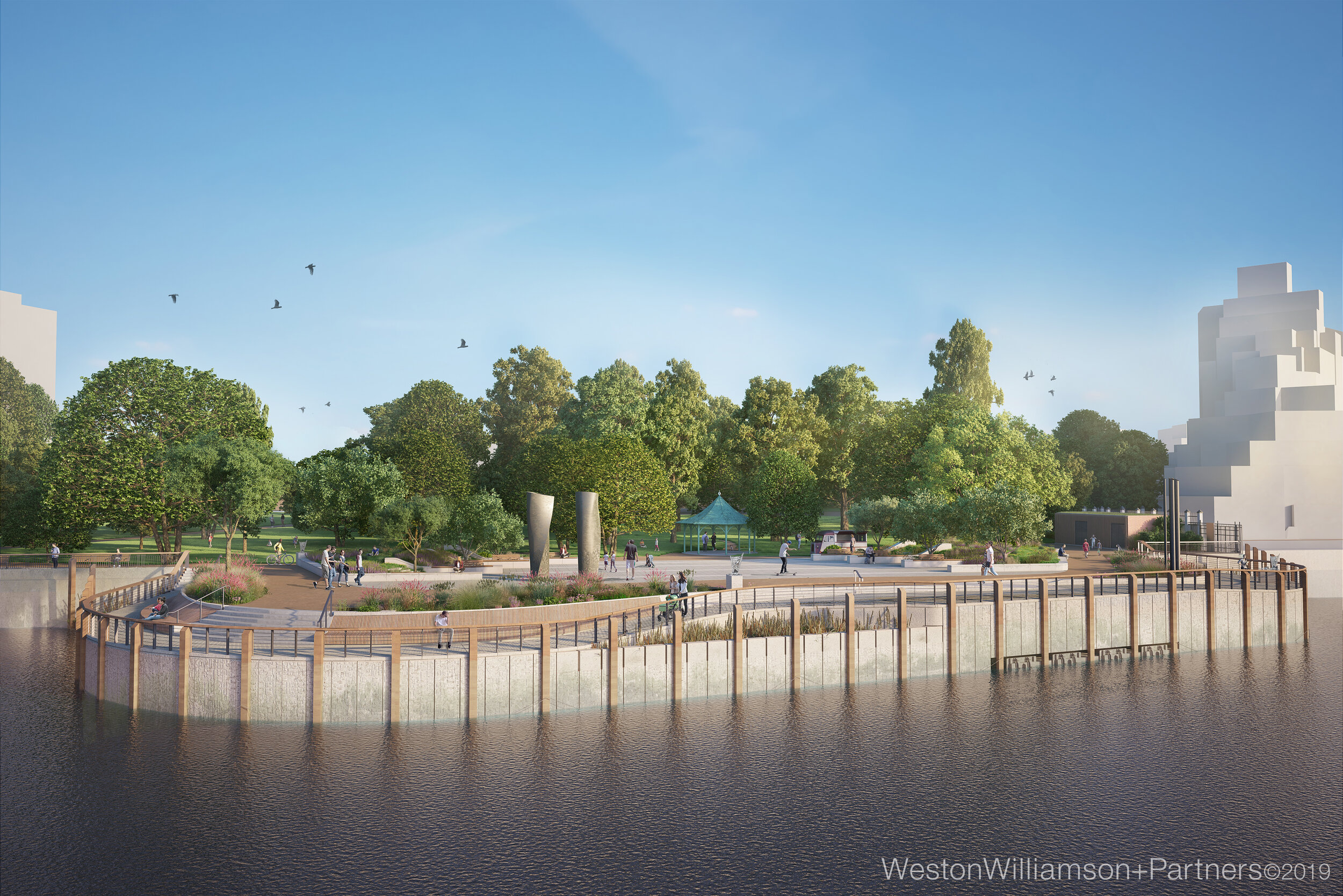King Edward Memorial Park, London
King Edward Memorial Park, London: Cargoes, Hew Locke OBE
Year
Being fabricated
Client
fereday pollard for Tideway
Artist
Hew Locke OBE
Service
Commission Management
Location
King Edward Memorial Park, Wapping, London
A permanent commission for King Edward Memorial Park
Hew Locke OBE has been commissioned by Tideway to create a series of artworks for the riverside park.
The ‘cultural meander’ or heritage theme for the East section of the tunnel is ‘The Shipping Parishes – Gateway to the World’. Within this heading, the site-specific narrative for King Edward Memorial Park is Sailortown, international diaspora and progressive politics.
The artist Hew Locke, in response to the Heritage Interpretation Strategy (HIS) has developed an artwork which takes its inspiration from the site’s close historical links with the mercantile and dock communities and the impact of former British maritime power and trading empire on different ethnic, social and economic groups, both locally and internationally. Hew’s response is to create several sculptural boats which relate to this timescale and associated activities.
In order to develop the design of the sculptures he has gathered information on the appropriate heritage of the boats, their decoration and symbolism. In many cultures ships are symbolic of a persons’ passage through life and as a container of the soul. Histories will be suggested by specific decorative details and cargos, which has been the focus of his consultation.
The artist has undertaken research about guilds and companies (Watermen & Lightermen, Hudson Co, East India Company, Thames Iron Works), history from the Elizabethan period – including the various waves of immigration and different diaspora groups in the area. Hew has met with and consulted: members of the local community, the National Maritime Museum and Museum of London; the Boitok Group (St Hilda’s East Community Centre), the Coriander Club (Spitalfields City Farm), and the Hermitage Community Moorings. These groups have augmented Hew’s research and identified additional motifs and elements to be incorporated into the sculptures. In addition to the artist reviewing and revising the actual type of boats themselves.
Hew’s proposal comprises a series of unique cast bronze boats representative of the history of the Thames and shifting population of the East End, placed on low plinths or more integrated around the foreshore site into the landscaping. Collectively, they create a trail through the park, linking the new public realm with the park.
The sculptures will be approx. 1000mm long and 300mm wide but vary in scale and form. They will be un-patinated. The proposed boats are a Tug, Chinese Junk, Flat Barge, Carrack, Thames Barge and a Bangladesh River Boat. They respond to and represent the diaspora of the immediate area.
Sites were identified in collaboration with the design team to lead people through the park to the foreshore structure, to be seen with the river as a backdrop, and at different levels to discover as you move through the site. The trail of artworks, leading to the foreshore and through the nature of the sculptures, directly reconnects people with the River Thames.For more information on the site’s history see Tideway’s Heritage Interpretation Strategy.
“Carriers of countless possible meanings, evoking centuries of warfare, trade and strategies of cultural imperialism, they (boats) also hold personal significance for the artist.”
Fabrication
The artworks will be cast in bronze, using the lost wax process. The artist will work closely with the fabricators throughout to create full-scale models using clay and mixed media, adding to the surface textures and detail. Rubber moulds will then be made of the models. These are used to make exact copies of the models in wax (wax casing). The artist will add further details and make minor adjustments at this stage too (wax finishing). The waxes will then be cut into a number of smaller pieces to make them manageable and will then be encased in a plaster mould (plaster moulding). The casting process then pours the bronze in which burns out the wax. After the bronzes have been released from their plaster moulds the pieces are welded together (joining), any repairs are made and the bronzes are cleaned. The artist and founders will then engrave any final details (bronze finishing).
“Here’s the thing: Guyana means ‘land of many waters’ – you are constantly aware of boats. I went to Guyana as a five-year-old kid on a boat. I came back here on a boat. So many things, good and bad, travel by sea.”
Hew Locke explores the languages of historical and contemporary power, how different cultures fashion their identities through visual symbols of authority, and how these representations are altered by the passage of time.
Hew’s work was shown as part of a landmark group exhibition celebrating 70 years of Caribbean-British art at Tate Britain in Life Between Islands: Caribbean-British Art 1950s – Now , 2022; the Duveen Galleries installation Procession featured 150 life-sized and colourful figures staging a “powerful and unsettling” procession, according to The Guardian. It “invites visitors to ‘reflect on the cycles of history, and the ebb and flow of cultures, people and finance and power,’” said the Tate. See a Guardian review here.
Recent international work include: Gilt a suite of new sculptures for The Met Fifth Avenue's facade niches, the third in a new series of site-specific commissions for the exterior of the Metropolitan Museum of Art, NYC. The Facade Commission.
Locke completed his MA in Sculpture at the Royal College of Art. He has been the recipient of a number of coveted awards and has realised several high-profile public art commissions. His work has been represented in countless exhibitions in the UK and abroad, and included in prestigious collections worldwide. Locke is a member of the interdisciplinary team that is designing the Camden Highline.
He has been commissioned by the U.K.’s Government Art Collection to create works in response to the recent coronation of King Charles III and Queen Camilla. New works will become part of the collection and support its public programme.
For more information see:
www.tideway.london

